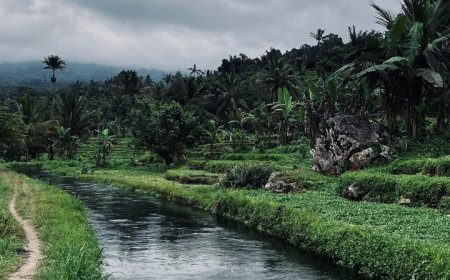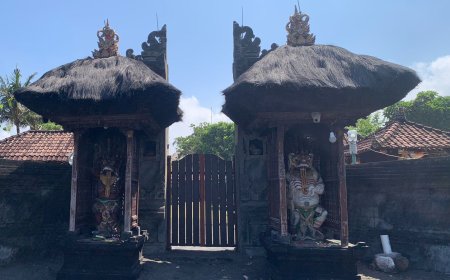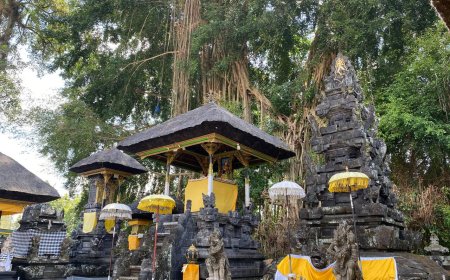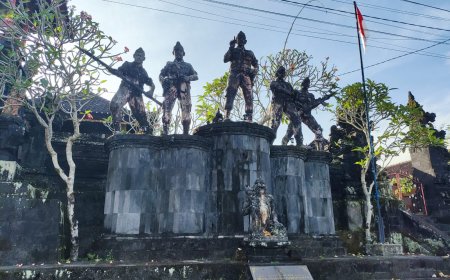"Pura Ponjok Batu: The History of the Temple with Traces of Stone Boat Relics in Buleleng Regency"
"Bali is known as the Island of the Gods. It is not surprising that on this island, there are numerous sacred structures called Pura, and almost every corner of the region is adorned with places of worship for the Hindu community. One of the temples with high historical significance frequently encountered in Bali is Pura Ponjok Batu. Located in Buleleng Regency, Pura Ponjok Batu is one of the Dang Khayangan temples or sacred places associated with the arrival of Priest Siwa Sidanta Dang Hyang Nirarta (Ida Pedanda Sakti Wawu Rauh) in the 15th century AD."
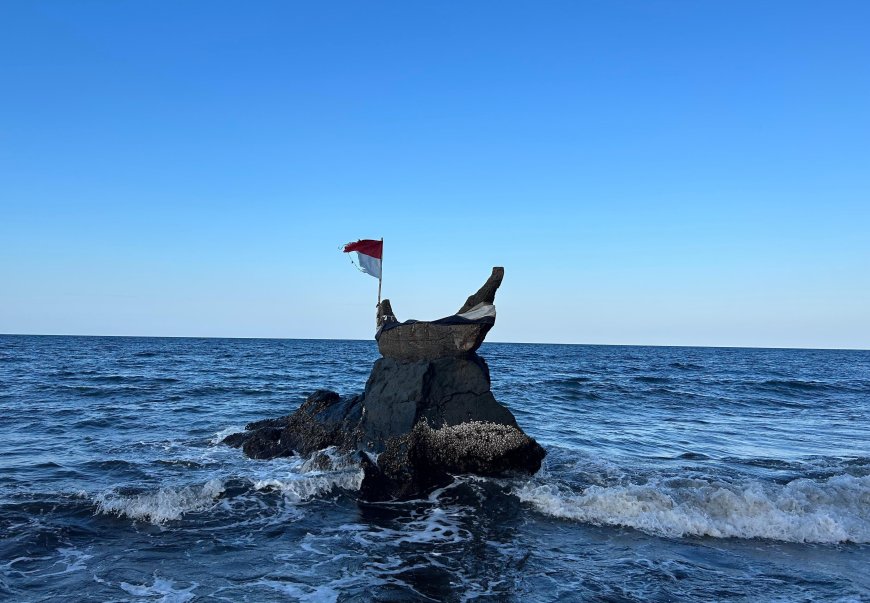
"Bali is renowned as the Island of the Gods. It's not surprising that on this island, numerous sacred structures known as Pura are scattered throughout the region, providing places of worship for the Hindu community in almost every corner. One of the temples with significant historical value frequently encountered in Bali is Pura Ponjok Batu, located in Buleleng Regency. This temple is one of the Dang Khayangan temples, associated with the arrival of Priest Siwa Sidanta Dang Hyang Nirarta (Ida Pedanda Sakti Wawu Rauh) in the 15th century AD.
Pura Ponjok Batu in Buleleng has a long and unique historical record. Bali residents also believe that this temple existed long before the 15th century AD. This belief is reinforced by evidence in the form of sarcophagi, burial containers made of volcanic rock. Such burial practices have been used by the Balinese people since around 2500 to 3000 BC. Placing the deceased in sarcophagi is a form of homage to the ancestors.
Pura Ponjok Batu gets its name from its location on a peninsula that juts out into the sea. This temple has a mysterious history, and scant historical evidence, such as the Dwijendra Tattawa Palm Leaf Manuscript, notes its existence in Buleleng.
The story of the arrival of Priest Siwa Sidanta, also known as Danghyang Nirartha, during the reign of Dalem Waturenggong recounts his spiritual journey to various temples, starting with Pura Pulaki. During this journey, he also visited Pura Ponjok Batu and meditated there.
When Danghyang Nirartha arrived at Pura Ponjok Batu in Buleleng, there is a story that he assisted a group of people and ship crew who came from Lombok. According to the tale, the crew saw a glowing rock in the middle of the sea, and as they tried to approach it, their ship suddenly suffered damage and could not continue the journey.
After that, Danghyang Nirartha provided assistance to the boat crew so that they could resume their journey back to Lombok. He then joined them on the journey to Lombok. Allegedly, the spiritual significance of Pura Ponjok Batu continued to grow, marked by a continuous glow from the location.
Pura Ponjok Batu in Buleleng not only holds its own spiritual value for the Balinese Hindu community but is also accompanied by a unique phenomenon of a stone boat in the middle of the sea. This boat appears to stand on a rocky outcrop and is considered sacred by the local community. It is said that this stone has existed since ancient times and possesses powerful, radiant energy, emitting a unique attraction. This stone is then known as Batu Pajenengan. The structure of this sacred place is also erected as a tribute to the greatness and spiritual abilities of Danghyang Nirartha, who assisted the priests at that time. Additionally, it reflects the symbol of the presence of a sacred water source or holy spring on the beach."
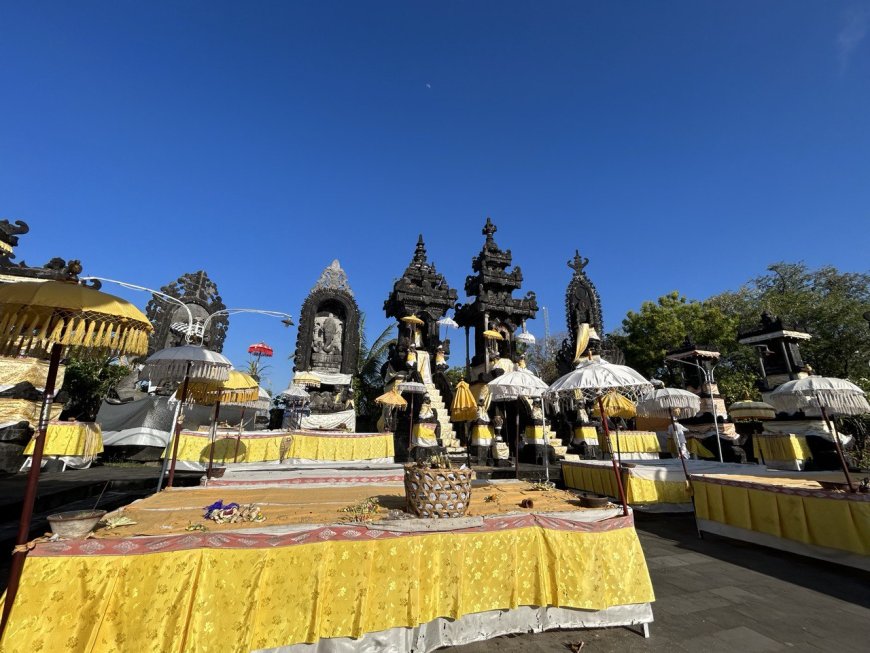
Ponjok Batu Temple (Photo Source : Personal Collection)
"After the arrival of Danghyang Nirartha, the spiritual significance of this sacred place was restored. Pura Ponjok Batu continued to emit light, even after Danghyang Nirartha left the place for Lombok, as narrated in the Dwijendra Tattwa Palm Leaf Manuscript.
According to folklore, Pura Ponjok Batu originates from a legend about Ida Batara in Bali who weighed the northern part of Bali using the Pura Penimbangan in the village of Panji. The result showed that the eastern part of North Bali was lighter. Therefore, Ida Batara added a pile of stones in the eastern region of North Bali to balance the scales.
Pura Ponjok Batu has undergone several restorations. The most recent restoration began in 1994 and reached its peak with the Ngenteg Linggih ceremony on Saniscara Wayang Karo, August 8, 1998. This temple is made of carefully designed black stone to ensure its strength is preserved."
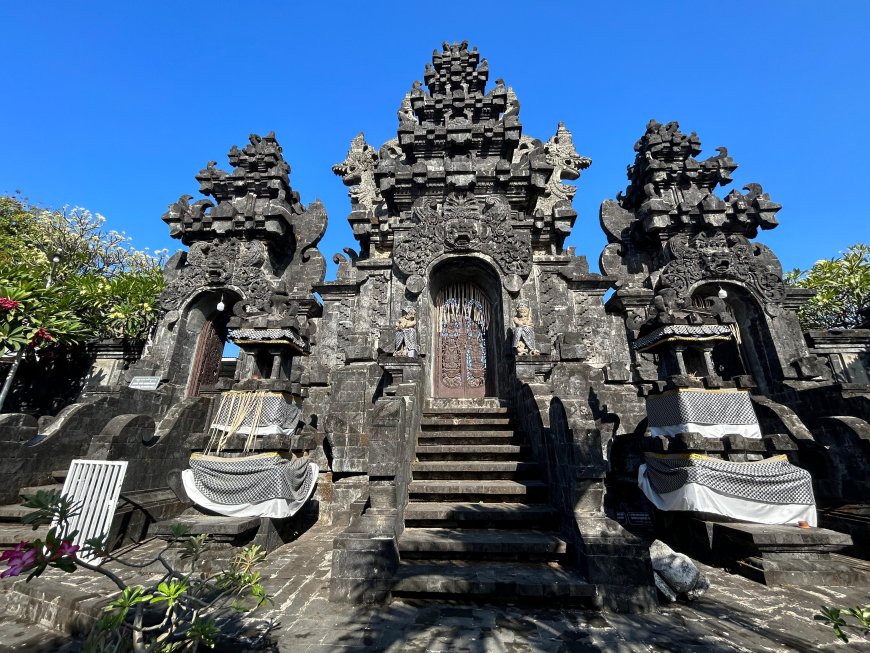
Ponjok Batu Temple (Photo Source : Personal Collection)
"Pura Ponjok Batu celebrates its piodalan (temple anniversary) twice a year, during the Purnama Desta and Sasih Kasa Purnama Kasa. During the Purnama Desta piodalan, the residents of the Adat Village Bangkah, Tejakula, play a role as ceremony organizers in this temple. Meanwhile, during the Sasih Kasa piodalan, residents from all over the Tejakula District participate. On the occasion of odalan or Purnama Tilem, many locals, including officials, visit this temple. During the celebration, many come to perform various ceremonies such as tamba, melukat, and seeking blessings.
A tradition that continues to this day at Pura Ponjok Batu is known as "Nyegara Gunung" (Sea and Mountain). This temple has a connection with Pura Bukit Sinunggal in the village of Tajun, Kubutambahan. When there is the Melasti Ceremony of Ida Batara at Pura Bukit Sinunggal and several other temples in Tajun, the purification ceremony is always held at Pura Ponjok Batu. This is because this location has a source of fresh water considered sacred, seen as the meeting point between inland water and the sea.
The connection between Pura Ponjok Batu and Pura Bukit Sinunggal is very close. Pura Ponjok Batu is considered the lower zenith point, while Pura Bukit Sinunggal in Tajun is considered the upper zenith point. This reflects the eternal harmony between the sea and the mountain. Bali holds high spiritual value as the beaches in North Bali are close to the mountains, making the purity level on the coastal areas equivalent to the purity level in the mountainous regions. Therefore, the implementation of the Nyegara Gunung Ceremony in the Pitra Yadnya Ceremony becomes crucial."




















